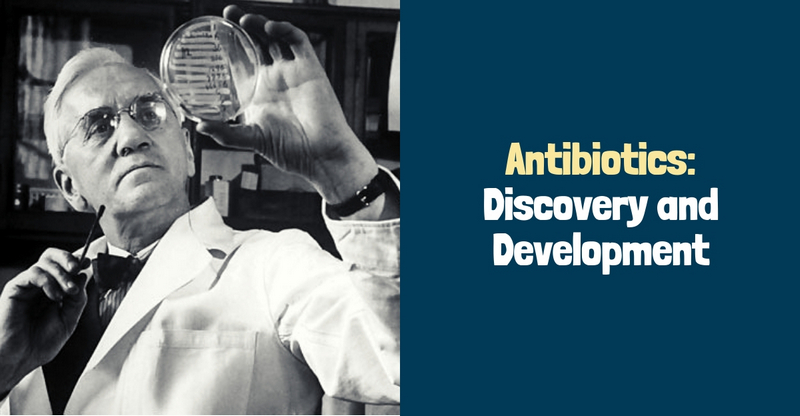
In the whole history of mankind, there was no medicine that would save as many people from death as penicillin. It got its name from the progenitor – mold Penicillium, which soars in the air in the form of spores. We will tell you about what happened in the laboratory of Fleming and how antibiotics were created.
Penicillin: how the discovery of Fleming turned into an antibiotic
Penicillin was discovered by the Scottish biochemist Alexander Fleming. Although, the fact that Fleming came across the properties of mold was logical. He has been working up to this discovery for many years.
During the First World War, Fleming served as a military doctor and could not accept the fact that the wounded died after a successful operation – from the onset of gangrene or sepsis. Fleming began to look for a way to prevent such injustice.
In 1918, Fleming returned to London to the bacteriological laboratory of St. Mary’s Hospital, where he worked from 1906 until his death. 1922 was a big success, extremely similar to the story that led to the discovery of penicillin six years later.
Fleming, affected by cold, placed another culture of the bacteria Micrococcus lysodeikticus in the so-called Petri dish, a wide glass cylinder with low walls and a lid, and suddenly sneezed. A few days later he opened this cup and found that the bacteria died in some places. Apparently – in those where mucus came from his nose when sneezing.
Fleming began to check this phenomenon. As a result, lysozyme was discovered – the natural enzyme mucus of humans, animals and, as it turned out later, some plants. It destroys the walls of bacteria and dissolves them, but it is also harmless to healthy tissues. It is not by chance that dogs lick their wounds – this reduces the risk of their inflammation.
However, lysozyme acts on most bacteria rather slowly. In addition, it fights not pathogenic bacteria, but saprophytes – cohabiting microorganisms, which are always present in humans. Lysozyme regulates their amount and due to this, they do not become parasites.
After each experiment, the Petri dishes were supposed to be sterilized. Fleming didn’t have the habit of throwing out cultures and washing labware right after the experiment. Usually, he was engaged in this unpleasant work when two or three dozen cups were piling up on the desktop.
“As soon as you open the culture cup, troubles await you,” Fleming recalled. “Be sure to get something out of the air.” Once, when he was studying the flu, a mold was found in one of the Petri dishes, which, to the scientist’s surprise, dissolved the sown culture — colonies of Staphylococcus aureus.
To test his suggestion of the bactericidal effect of mold fungus, Fleming transplanted several spores from his cup to the nutrient broth in the flask and left them to germinate at room temperature.
The surface was covered with thick felt corrugated mass. It was originally white, then turned green, and finally turned black. At first, the broth remained clear. A few days later it acquired a very intense yellow color, having developed some special substance, which Fleming could not obtain in its pure form because it turned out to be very unstable. The fungal yellow substance was called penicillin.
It turned out that even at a dilution of 500–800 times, the culture fluid suppressed the growth of staphylococci and some other bacteria. Thus, an exceptionally strong antagonistic effect of this type of fungus on certain bacteria has been proven.
It was found that penicillin suppressed the growth not only of staphylococci but also of streptococci, pneumococci, gonococci, diphtheria and anthrax bacilli, but did not act on E. coli, typhoid bacilli and flu, paratyphoid fever, cholera. An extremely important discovery was the absence of the harmful effects of penicillin on human leukocytes. This meant the safety of penicillin for people.
The scientist called the discovery of penicillin “a happy event.” According to the researcher, he did not expect that the antibiotic discovered by him would revolutionize medicine. “But I suppose that’s exactly what I did,” said the microbiologist.
In 1945, Nobel Prize for the discovery of penicillin was awarded to Fleming and two more scientists: pharmacologist Howard Walter Flory and biochemist Ernst Boris Cheyne. In mid-1939, they became interested in the discovery of Fleming, who had stopped work on penicillin since he was not a chemist and could not isolate pure substance.
Flory and Cheyne spent two years and were able to isolate and clear a promising substance. The yellowish powder they obtained had tremendous potential: even diluted thirty million times it continued to kill streptococci. Antibiotic tests on mice showed almost one hundred percent efficacy: penicillin saved from death 24 out of 25 animals that were given a lethal dose of streptococcus. The same powder was tested on the first man on February 12, 1941.
Antibiotic resistance: the problem of our new century
According to many experts, the fact that antibiotics lose their effectiveness in the fight against diseases is largely the fault of the patients who do not always take antibiotics strictly according to indications or in the necessary doses.
The problem of resistance is extremely great and affects everyone. It is of great concern to scientists, we can return to the pre-antibiotic era because all microbes will become resistant, not a single antibiotic will act on them. Our inept actions led to the fact that we can be left without very powerful drugs. We will have no drugs to treat such terrible diseases as tuberculosis, HIV, AIDS, malaria.
That is why antibiotic treatment should be treated very responsibly and a number of simple rules should be followed, in particular:
- never take antibiotics without a doctor’s recommendation;
- do not interrupt the course of treatment, even if you feel better;
- remember that antibiotics do not fight viral infections!
